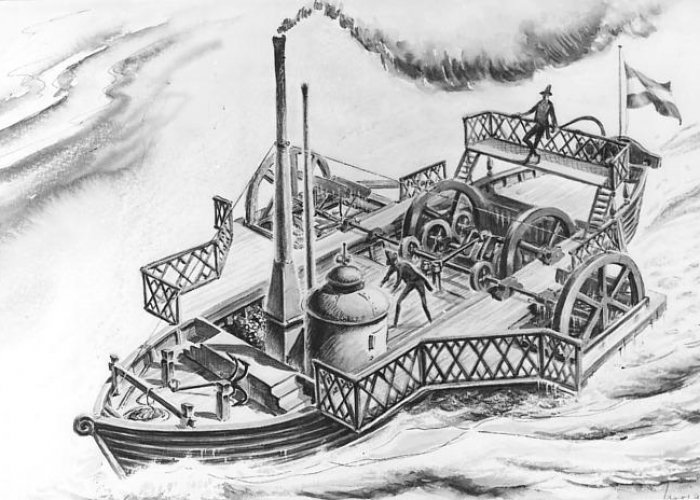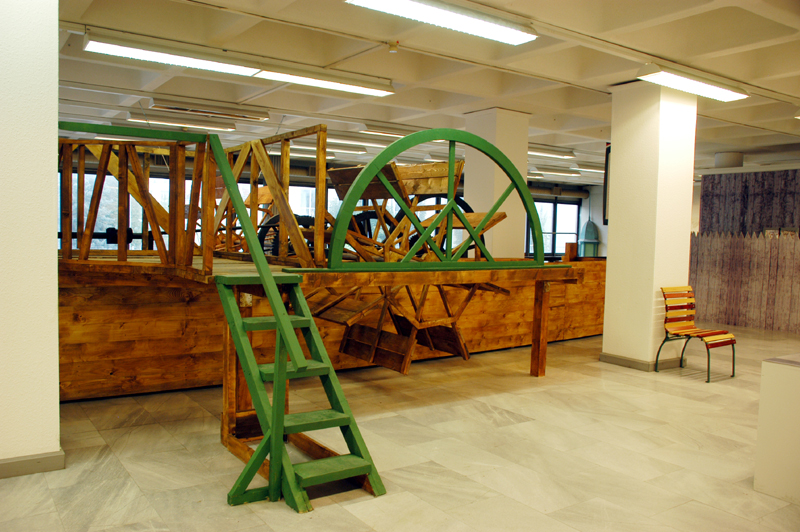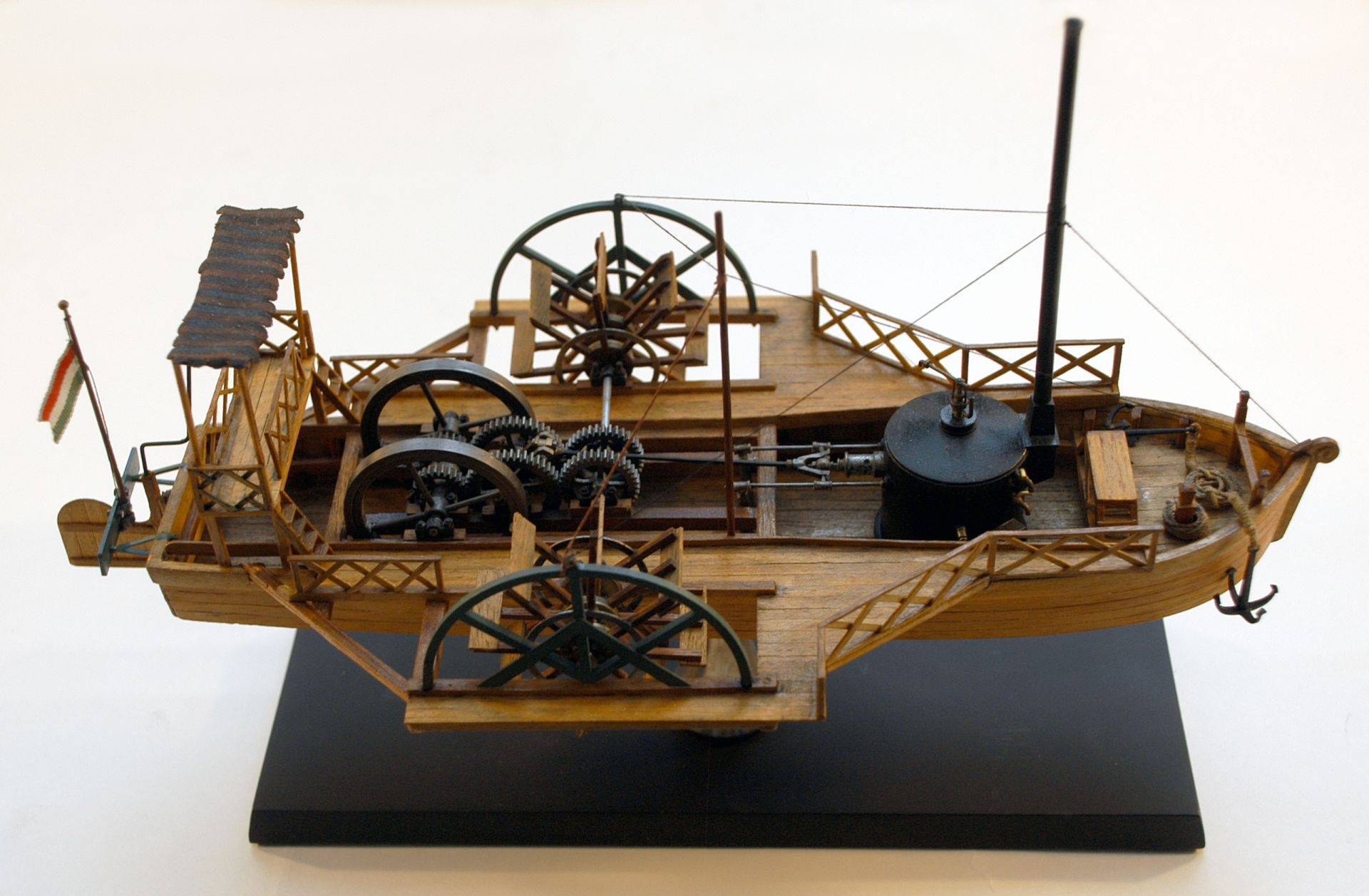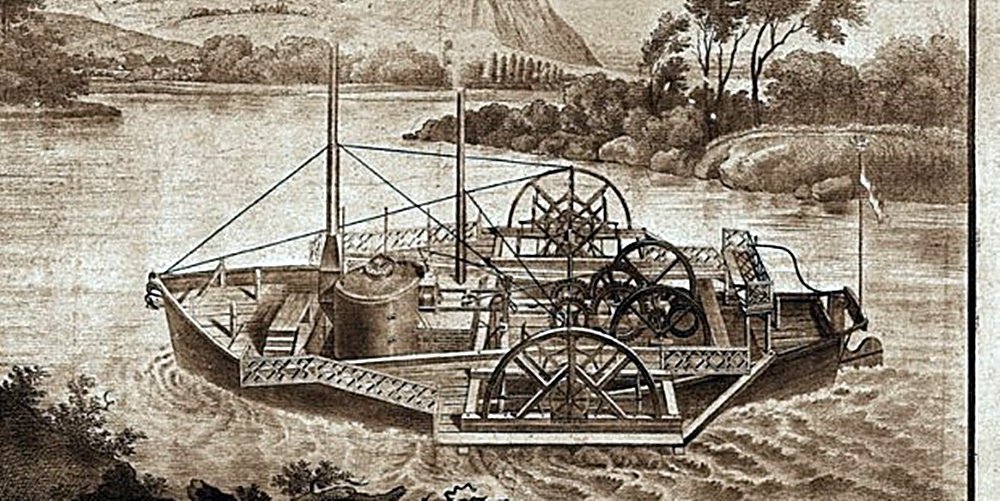The first Hungarian steamboat, the Carolina, operated on a regular basis from 16 July 1820: it carried passengers between Buda and Pest. In fact, the passengers were not travelling on the ship itself but on the barge that the boat was towing behind.
The business was not successful, the boat was slow and expensive, and it was easier to cross the Danube using the pontoon bridge.
But how did this ship get between Buda and Pest?

Drawing of Carolina. It is clear that there was no space for passengers or cargo on the ship
The story began with the Danube flowing in the wrong direction. While Hungarian goods, mostly grain, should have been transported to Western Europe, the river flowed south-east, i.e., the cargo barges had to be hauled from the shore by oxen. At the end of the 18th century - the beginning of the 19th century, there was no road or railway network, large goods could only be transported by water.
The steamboat was the solution. Robert Fulton built his ship, Clermont, in the United States in 1807, but his fame went around the world, reaching the Habsburg Monarchy. However, engineers of the age believed that Fulton's ship was unsuitable for the Danube. In Vienna, a tender was issued for the construction of a steamboat operating on the Danube and for a patent for steam navigation on the Danube in 1813. At this call, the first Hungarian steamer was built on the Drava in 1817 by Antal Bernhard from Pécs, who was the tenant of the Eszék (today's Osijek in Croatia) pontoon bridge.
The boat called Carolina was not large, barely 13.3 metres long, 7 metres wide, its body was submerged one metre in the water, and it was propelled by a 24-horsepower steam engine.

Caroliana's life-size (half) model at the Transportation Museum's temporary exhibition The Bridgeman's Machines (A Hídember gépei) (Photo: MMKM)
The boat's technical solutions and steam engine contained several innovations, which were Bernhard's patents. The paddle wheel (originally developed for watermills) was also completely new, with its paddles always standing upright, driving the vehicle more efficiently.
Bernhard introduced Carolina in Vienna in May 1817. The boat was reviewed in the imperial city for a year, with the registration of his patents delayed. Time and time again, the inventor was asked for more tests, and he did so in Austria and Hungary. The reason for the delay was very prosaic: there were other applicants for the Danube freight patent. A French entrepreneur, St. Leon, had good royal court relations and the court intended to give the Austrian patent to him. Thus, at the end of 1818, Bernhard received a 15-year license only for the Hungarian Danube section.
The contractor tried to transport goods in the southern part of the Danube in 1819. It was not the boat itself that carried the goods, they only tried to utilize it as a tug, but the small boat could not handle the heavy cargo ships in the faster drift, so the attempt failed.
Bernhard did not give up, he travelled to Pest with his ship the following year, with a plan to launch a ferry crossing during the summer season. He applied for permission to do so in March 1820, and his plan was not even deterred by the fact that the ship got a leak and sank on 9 May under strange circumstances. Carolina was drawn out of the water, tidied up, and, after receiving the necessary permits, embarked on 16 July 1820, on her first scheduled journey.
The start of the new company was reported in the 8 July 1820 issue of Hazai’s külföldi Tudósítások:
"Last week, a special announcement made it public in Pest and Buda that Mr. Bernard and his company's steamboat would tow a pretty gondola on the Danube and transport guests from Pest to Buda, Víziváros (1st and 2nd District - Ed.), the Császár Baths and Óbuda at certain hours every day."
It sailed from today's Vigadó Square to Bomba, today's Batthyány Square, then to Óbuda, and covered this distance in just 1 hour 52 minutes. Pest – Bomba Square itself lasted 30 minutes, from here the Császár Baths was another 35 minutes. The return was, of course, faster, sailing back in 29 minutes to the starting point, to the Pest bridgehead of the pontoon bridge.
The ship made a total of two voyages between the two endpoints between 4 a.m. and 7 p.m., while during the day it sailed to the intermediate stations every two hours.
Those departing for the trip were warned with a shot to embark 5 minutes before the departure of the ship. Regular service also meant that Carolina departed regardless of the weather, even when there were no passengers. On Sundays, in fine weather, the boat made excursions to Margit Island.

Model of the ship in the collection of the Transportation Museum. The model is not accurate: it does not depict the Bernhard patent on the ship's paddle wheels, i.e., the one according to which the paddles were vertical in all cases (Photo: MMKM)
The fare up and down between Pest and Bomba Square was 10, to Császár Baths 20, to Óbuda 30 kreutzer per person, but there were group discounts and season tickets. The business was marred by the fact that the people who would have had to pay duty on the bridge had to pay the duty in addition to the ticket because the duty was not collected after crossing the bridge but after crossing the river.
The passengers did not travel on the ship itself, but in the 50-person longboat that followed. There was also a cabin on the longboat that could be used by passengers in rainy, cool weather for an additional fee.
The cruise operated until November, then stopped due to winter. It did not start again in 1821, possibly because the business was not profitable. Bernhard took the ship back to Eszék in 1821, where it sank in 1822.
Although Carolina, which was indeed an experimental prototype, was not successful business-wise, it showed that steampower had a future on the Danube.
Cover photo: The Carolina steamboat (Source: Hajoregiszter.hu/MMKM)





































Hozzászólások
Log in or register to comment!
Login Registration